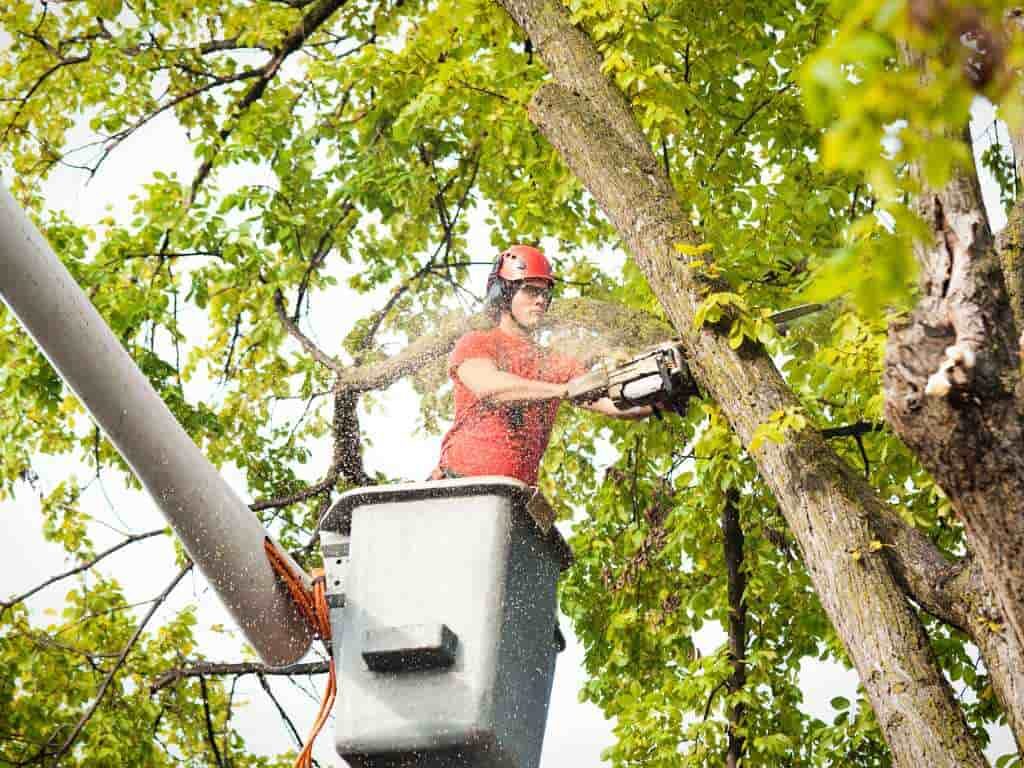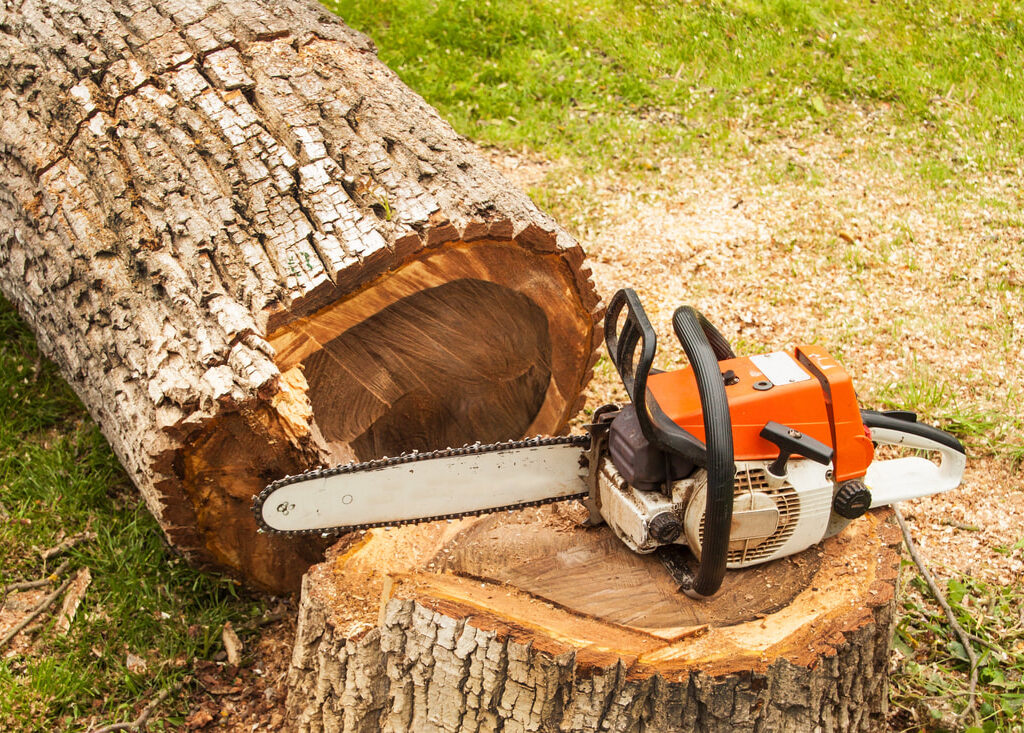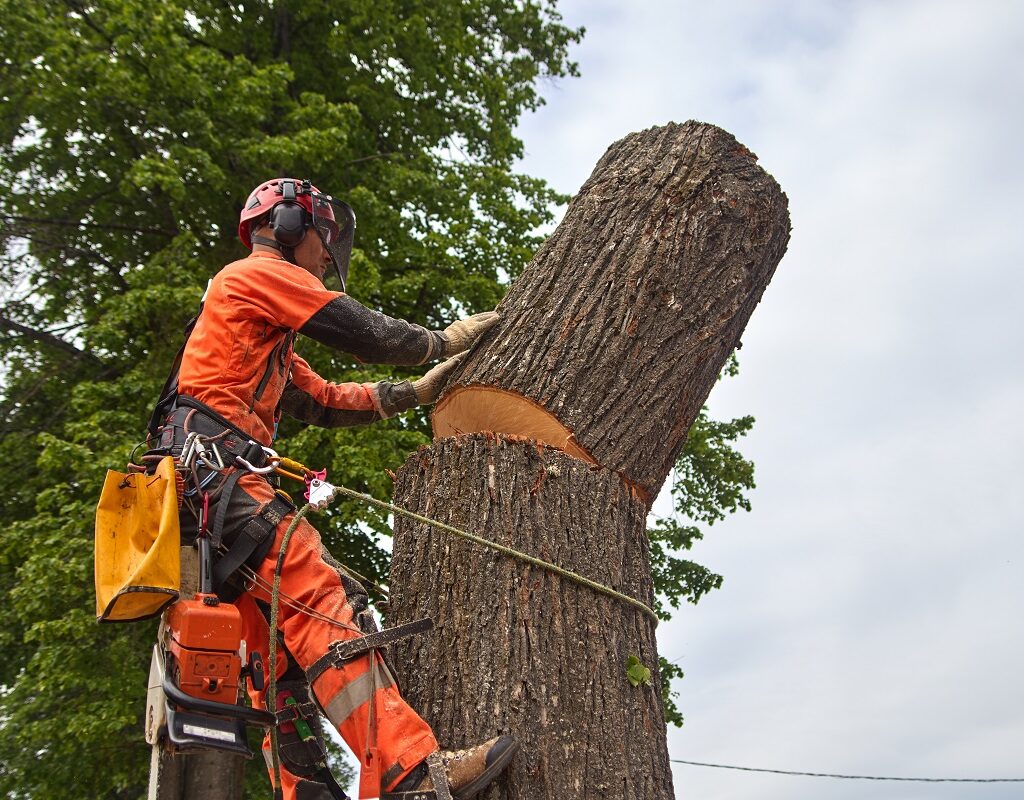Trees are a vital part of our environment, offering numerous benefits such as oxygen production, carbon dioxide absorption, and providing shade and beauty to our landscapes. However, there are instances when tree removal becomes necessary. In this article, we will explore the art and science behind tree removal in North Shore, examining its importance, the environmental impact, safety concerns, the aesthetic considerations, the preservation of landscape integrity, the science behind tree removal, the technological advances, the legal and ethical aspects, and the future of tree removal.
Understanding the Importance of Tree Removal
Although it may seem counterintuitive to remove trees, there are certain situations where it becomes necessary for the overall health and safety of the surrounding area. One significant reason for tree removal North Shore is the prevention of potential hazards. Trees that are diseased, damaged, or at risk of falling pose a threat to people and property. Removing these hazardous trees ensures the safety of the community.
Environmental Impact of Tree Removal
When removing trees, it is crucial to consider the impact on the environment. Trees play a vital role in carbon sequestration and reducing air pollution. Therefore, it is essential to carefully evaluate the environmental consequences and compensate for the loss of trees through appropriate measures such as replanting. Visit https://lakefamilyinc.com/elevating-green-spaces-our-commitment-to-sustainable-tree-removal-in-north-shore for sustainable tree removal in North Shore.
Safety Concerns and Tree Removal
Tree removal involves inherent risks. To ensure safety during the tree removal process, it is imperative to hire trained professionals who have the necessary expertise and equipment. Following proper safety protocols not only protects workers but also prevents accidents and property damage.

Furthermore, another important aspect to consider when it comes to tree removal is the impact on wildlife. Trees provide habitats for various species, including birds, squirrels, and insects. Removing trees without considering the potential displacement of these animals can disrupt the local ecosystem. Therefore, it is crucial to assess the presence of wildlife and implement measures to mitigate any negative effects.
In addition to wildlife, tree removal can also have an aesthetic impact on the surrounding area. Trees contribute to the beauty and character of a landscape, providing shade and enhancing the overall ambiance. Removing trees without careful consideration can result in a significant change in the visual appeal of the area. It is important to take into account the preferences and opinions of the community when making decisions about tree removal.
The Art of Tree Removal
Tree removal goes beyond the purely mechanical aspects. It also involves aesthetic considerations and the preservation of landscape integrity. Although removing a tree may be necessary, it is essential to minimize the impact on the overall visual appeal of the surroundings.
Aesthetic Considerations in Tree Removal
When removing a tree, it is important to consider how its absence will affect the aesthetics of the location. Sometimes, trees are culturally or historically significant, and their removal can be emotionally charged. In such cases, alternative solutions, such as tree relocation, may be explored to preserve the sentimental value and the landscape’s overall beauty.
Imagine a majestic oak tree standing tall in a park, its branches reaching out like arms, providing shade and shelter to those seeking solace in nature’s embrace. This tree has witnessed generations of laughter, love, and life unfold beneath its protective canopy. Its presence has become an integral part of the park’s identity, a symbol of strength and resilience. Removing such a tree requires careful thought and consideration, as it holds not only physical but also emotional significance.
Tree relocation, a method often employed in such circumstances, involves uprooting the tree and transplanting it to a new location. This delicate process requires the expertise of arborists who meticulously handle every aspect, from digging up the tree’s roots to ensuring its successful reestablishment in its new home. By preserving the sentimental value associated with the tree and maintaining the landscape’s overall beauty, tree relocation becomes an art form in itself.
Preserving Landscape Integrity
Tree removal should be approached with a holistic perspective, taking into account the larger landscape. The removal process should be conducted in a way that considers the impact on the ecosystem as a whole. By minimizing disruption and preserving the integrity of the landscape, tree removal can be integrated seamlessly into the surrounding environment.
Consider a scenario where a towering pine tree stands at the edge of a forest, its branches reaching towards the sky, providing a habitat for various bird species and a nesting ground for squirrels. The removal of this tree must be carried out with utmost care and precision to minimize the disturbance to the delicate balance of nature. Arborists, equipped with their knowledge and expertise, meticulously plan the removal process, ensuring minimal impact on the surrounding ecosystem.
Before the actual removal takes place, a thorough assessment of the tree’s surroundings is conducted. This includes identifying any other plant species that may be affected by the removal and devising strategies to protect and mitigate potential damage. By employing advanced techniques, such as directional felling, where the tree is carefully guided to fall in a specific direction, arborists can control the tree’s descent, avoiding any unnecessary destruction.

Furthermore, the aftermath of tree removal is equally crucial in preserving landscape integrity. Arborists take into account the potential gaps left by the removed tree and develop strategies to fill them with appropriate vegetation. This ensures that the ecosystem remains balanced and the visual appeal of the landscape is maintained.
The Science Behind Tree Removal
Tree removal is not just an art form; it is also grounded in scientific principles. Understanding the biology of trees and advancements in removal techniques is essential to execute tree removal projects effectively and efficiently.
Tree Biology and Removal Techniques
By studying the biology of trees, arborists can determine the best approach for removing a specific tree. Factors such as species, age, condition, and surrounding environment play significant roles in selecting the most appropriate removal technique. This knowledge allows for the efficient removal of trees while minimizing potential damage.
When it comes to tree biology, one important aspect to consider is the root system. The roots of a tree are responsible for anchoring it to the ground and providing essential nutrients. Understanding the depth and spread of the root system is crucial in determining the best method for removing the tree. For example, if a tree has shallow roots that extend widely, special care must be taken to avoid damaging nearby structures or underground utilities during the removal process.
Technological Advances in Tree Removal
Technological advancements have greatly contributed to the efficiency and safety of tree removal. Innovations in equipment, such as cranes and machinery, have made it possible to remove trees in challenging locations. These powerful machines can safely lift and lower heavy tree trunks and branches, ensuring that the removal process is carried out smoothly and without causing harm to the surrounding area.
Furthermore, the use of drones and laser scanning has revolutionized the way arborists assess tree health and plan removal procedures. Drones equipped with high-resolution cameras can capture detailed images of the tree from various angles, allowing arborists to identify any signs of disease or structural weakness. Laser scanning technology, on the other hand, provides precise measurements of the tree’s dimensions, enabling arborists to plan the removal process with accuracy and efficiency.
By harnessing the power of technology, arborists can now approach tree removal with a greater level of precision and safety. These advancements not only benefit the arborists themselves but also ensure that the removal process is carried out in a way that minimizes any potential risks or damages to the surrounding environment.
Legal and Ethical Aspects of Tree Removal
Tree removal is subject to legal regulations and ethical considerations. These factors ensure that tree removal practices are carried out responsibly and considerate of the community’s needs and environmental impact.
Local Regulations for Tree Removal in North Shore
In North Shore, specific regulations govern the removal of trees to protect their ecological significance and the aesthetics of the area. Awareness and adherence to these regulations are crucial to avoid legal ramifications and to ensure responsible tree removal practices.
North Shore takes pride in its lush greenery and natural beauty. As such, the local government has implemented stringent regulations to safeguard the trees that contribute to the region’s unique charm. These regulations outline the criteria for tree removal, including the size, species, and health of the tree. They also require property owners to obtain permits before initiating any removal activities.
By implementing these regulations, North Shore aims to strike a delicate balance between progress and preservation. The authorities recognize the importance of trees in maintaining a healthy ecosystem and enhancing the quality of life for residents. Therefore, they have established guidelines that encourage responsible tree removal practices while allowing for necessary development and growth.

Ethical Dilemmas in Tree Removal
Tree removal can present ethical dilemmas, particularly when it involves the removal of healthy trees for development purposes. Striking a balance between economic considerations and environmental preservation is key. Alternate solutions, such as incorporating trees into the development plan or donating them for community use, can help resolve these ethical dilemmas.
When faced with the decision to remove a healthy tree for development, property owners and developers must carefully weigh the potential benefits against the environmental impact. It is essential to consider the long-term consequences of removing a mature tree, such as the loss of habitat for wildlife, reduced air quality, and the disruption of the local ecosystem.
Fortunately, there are ethical alternatives that can mitigate the impact of tree removal. For instance, developers can collaborate with landscape architects to incorporate existing trees into the design of new structures, creating a harmonious blend of nature and development. Additionally, instead of simply discarding removed trees, they can be donated to the community for repurposing, such as creating furniture or using the wood for construction projects.
By exploring these ethical alternatives, property owners and developers can demonstrate their commitment to responsible environmental stewardship while still achieving their development goals. This approach not only benefits the community but also fosters a sense of pride and sustainability in the region.
The Future of Tree Removal in North Shore
The future of tree removal lies in sustainable practices and innovative techniques that minimize environmental impact and address emerging challenges.
Sustainable Practices in Tree Removal
Sustainability is becoming increasingly important in all aspects of our lives, including tree removal. Adopting sustainable practices, such as replanting trees in nearby areas or using the removed trees for renewable energy sources, ensures the long-term environmental well-being of the community.
Innovations in Tree Removal Techniques
As technology continues to advance, so do tree removal techniques. New methods are being developed to enhance efficiency and minimize disruption to the environment. Innovations, such as bio-friendly chemicals for stump removal or advanced machinery that reduces noise pollution, are transforming the field of tree removal.
In conclusion, tree removal in North Shore goes beyond the mere act of cutting down trees. It requires a holistic understanding of the importance of tree removal, the scientific principles behind it, and the legal and ethical considerations. By embracing sustainable practices and incorporating technological advancements, we can ensure the future of tree removal remains rooted in both art and science, preserving the aesthetic beauty and environmental integrity of our landscapes.

